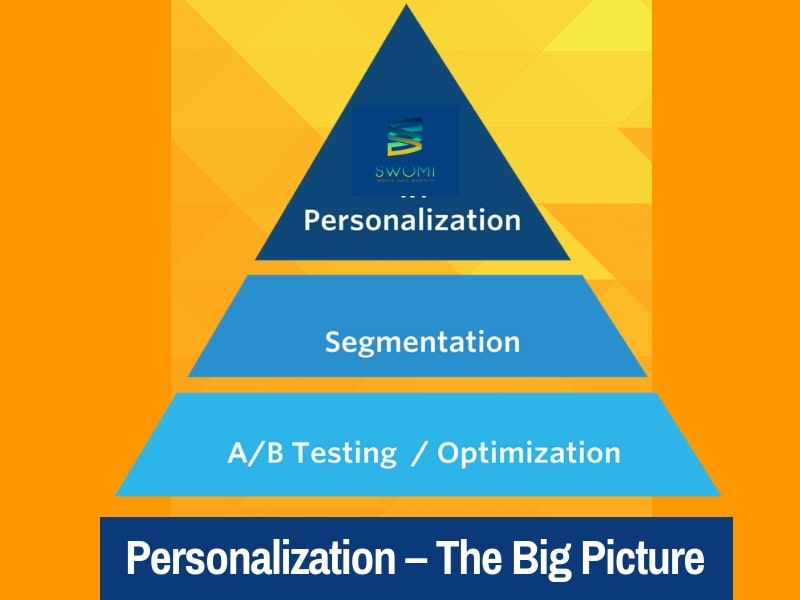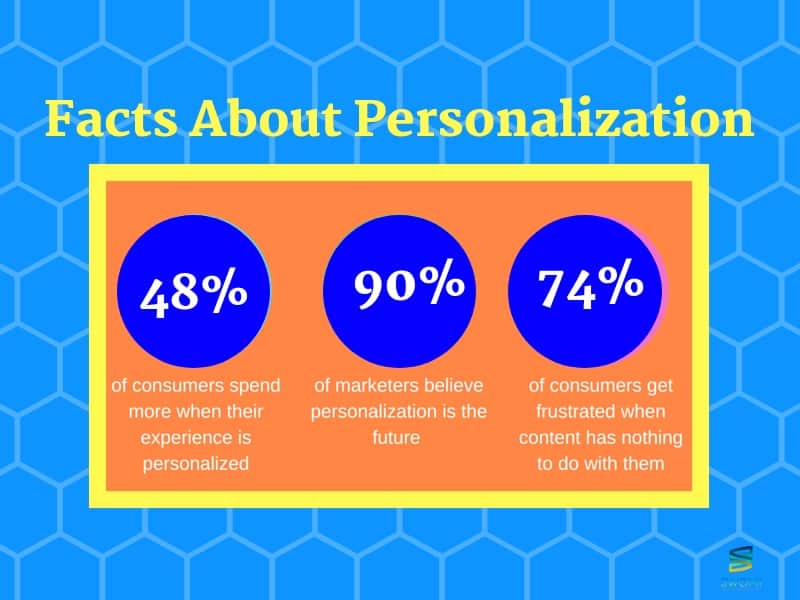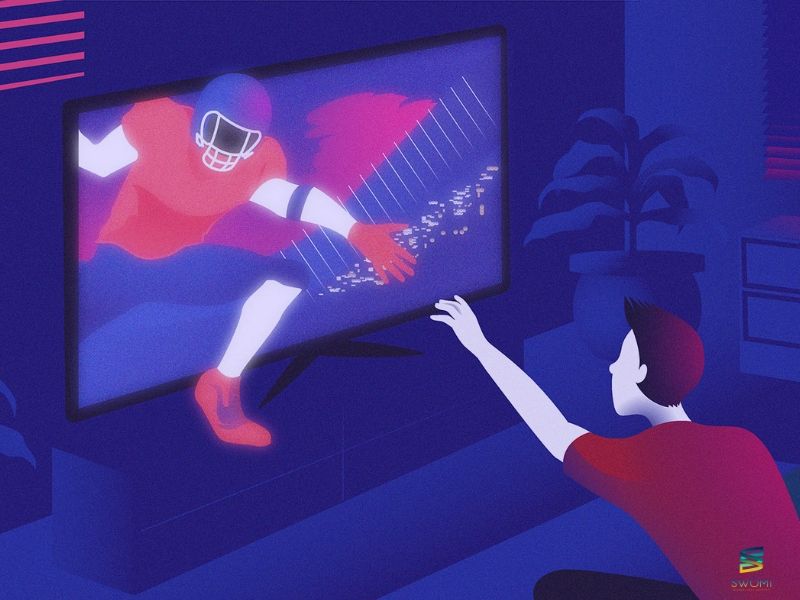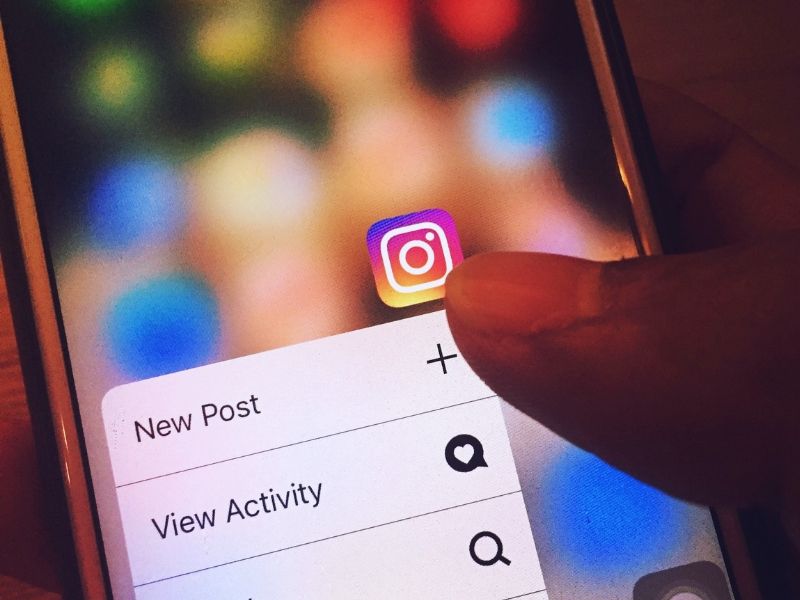The future will focus and cater to people on an individual level.
https://soundcloud.com/frmlondonwithlove/higher
This article is letter (N) of our “Trending Topics" series where we write an article for each letter of the phrase. “Trending Topics" looks at what's the hottest, latest, and greatest for the coming new year and beyond. Find links to more articles in the series below.
What does the future hold? A personalized and humanized digital network. Both personalization and humanization create online networks tailored and focused on people. Personalization relates to people on an individual level. And a network of people is nothing without humanization.
With the excessive amount of human-made data bloating the online web, it can be a challenge for marketers to get their content noticed. Consumers also can feel like their drowning in content and don’t have any direction on where to go. Personalization can call out your name and be your guiding light to experiences tailored just for you.
The next step after personalization is humanization. Humanization asks how we can remain human in an increasingly digitized world. The answer is to create technology that is responsive and adaptive to how humans learn, think, and create. People will no longer sacrifice their humanity to support machines. Technology will cater to humans.
Personalization

Personalization provides experiences, suggestions, and content based on a user’s previous behavior.
The Big Picture
The recipe for personalization is data, content, and automated systems. Personalization starts with A/B testing. A/B testing reveals what content different people in your customer base engage with.
With this knowledge, you can then segment your audience. You can divide your audience into as many segments as you want. Just remember, the complexity of your campaigns increase with each added segment.
Here’s where personalization enters the picture. It is the tool that will make managing your segments much easier. That’s because personalization uses automation to provide tailored customer content. Trust the machine learning algorithms to make decisions on sending personalized content to the right person.

Sometimes people get confused between customization and personalization. Some marketers out there don’t even know there’s a difference and use customization and personalization interchangeably. So we’ll get the record straight once and for all.
Customization is when the user chooses their preferences.
Personalization uses an automated system to deliver content based on the user’s past behavior.
Customization is largely a manual process that takes place on the user’s end. For example, a person can pick and choose the type of emails they subscribe to when signing up for a newsletter. From their customized choices, a personalization system can remember that customized choice and suggest future content based on it.
Here, we can see where a lot of the confusion between the two come from. Customization and personalization are two separate processes, but they can also be used to support and enhance each other.
Why Personalization?
Personalization is the direction the future is headed. If you haven’t taken steps to incorporate personalization into your marketing strategy, you will find yourself falling behind.
Take a look at this. By 2020, 51% of consumers will expect a company will anticipate and provide their needs before they even make first contact with that business.
Research also shows:
- 48% of consumers spend more when their experience is personalized
- 90% of marketers believe personalization is the future
- 74% of consumers get frustrated when content has nothing to do with them
Personalized content is what people want. Actually pretty soon, personalized content will be the only type of content consumers will engage with. We live in the age of peak content. More content is being created than can be consumed.

The team at Domo released their “Data Never Sleeps 6.0” infograph that looks at the world’s data generation and online behavior. Within the last two years, 90% of all data that exists today was created. That’s 2.5 quintillion bytes of data per day. The human race has been very busy.
Domo goes even further and breaks down how much content was created every minute in 2018 with 2019 to come:
- Youtube users watch 4,333,560 videos
- Google conducts 3,877,140 searches
- 103,447,520++ spam emails are sent
- Netflix users stream 97,222 hours of video
- Amazon makes over $300,000 in sales
- Tumblr users publish 79,740 posts
- 15,220,700 texts are sent
- Americans uses over 3,000,000 gb of internet data
Let’s just repeat this so it sinks in. All that activity happens in just one minute.
What else did they find? More than 7 billion people use the internet (the world’s current population is 7.7 billion).
Now you can see why personalization is so essential going forward. In that massive sea of content, only content that touches people on an individual level will stand out.
Humanization & Audience Intelligence
It is in this overwhelming internet ocean of data, we find ourselves asking, “How do we remain human in a digital society?”

What Is Humanization?
Are we losing the meaning behind what it means to be human? Technology benefits us in ways beyond anyone’s imagination.
But with rising rates of deteriorating mental health, physical activity, and quality relationships, it leaves us wondering what is the cost of a digital society? Are the negatives worth the benefits? Society’s collective imagination sees technological advancements as our savior or digital threat.
Humanization is based around these pressing questions and ideas.
Art Futura describes humanization best:
“Humanized Technology is the technology that responds and adapts to how humans learn, think and create, and what humans need to thrive in a digital society.”

Art Futura elaborates the internet and social networks laid the groundwork for us to explore infinite possibilities of the self and individualism. Virtual reality or mixed reality allow us to experience compassionate and empathic communication networks.
Left unchecked, technology can be an all-consuming force on our attention. Humanization explores ways to guide technological development to benefit people. This avoids people negatively adapting to live a digital lifestyle.
A More Humanized Brand

Humanization can mean different things in different contexts. The type of humanization we’ve covered so far is a general concept that applies to society as a whole. But companies are also taking the initiative to humanize their brands.
Digital opportunities to build relationships, interact, continuously share a story, and an opportunity to collaborate and co-create. So how do these make a brand more human?
A human brand can be defined by these characteristics:
- Transparent
- Communicative
- Collaborative
- Caring
The main goal of having a human brand is to build life-long, trusting relationships with their customers through warmth and compassion. Being transparent, communicative, collaborative, and caring create relationships built on empathy.
Companies like Panera Bread, a fast-cafe type restaurant, who focus on creating a human brand see happier customers and loyal brand advocates. Having a human brand has clear business benefits.
Word Up:
Personalization and humanization are just two fields that exemplify how the future will be a more individualized place. At the same time, these individuals will all be part of a network.
Personalization reaches each online user on a unique and individual level. As technology advances, more sophisticated algorithms will provide highly tailored experiences, suggestions, and content. If content is not addressed and made for a specific person, the content will simply be lost in the data void. Instant gratification is no longer fast enough. Consumers expect companies to already anticipate their needs and preferences before even making first contact.
Along with personalization, companies are humanizing their brands to build stronger relationships with consumers. People don’t want a cold, machine-focused world. People will always be people and crave and want quality relationships, even relationships with brands.
sources: slideshare, rrdonnelley, neimanreports, elgibborsms, brooksbell, kworq, marketingland, artfutura, digitalinformationworld segmentify
This article is letter (N) of our “Trending Topics" series where we write an article for each letter of the phrase. “Trending Topics" looks at what's the hottest, latest, and greatest for the coming new year and beyond. Find links to more articles in the series below.
(T) The Major (T)rending Topics For 2019
(R) Everyone Is A Brand And Online (R)eviews Decide Your Reputation
(E) What’s Trending In (e)Content
(N) The (N)aked Truth About Your Online Privacy
(D) Surprising (D)ata Predictions For 2019
(I) Stay Ahead Of 2019 With These 11 (I)ntelligent Trends
(N)etwork Personalization And Humanization Create A Human-Centric World
(G) New Kids On The Block: (G)eneration Z And The Future Of Tech
(T)rust Makes The Online World Go ‘Round
(O) Content Marketing (O)bjectives Are The Bridge To Your Goals
(P) Online (P)rivacy Trends: Your Data Is A Big Deal
(I) 2019 – The Year Of (I)nventions, Innovations, Progress, And Ideas
(C) The In’s And Out’s Of Content (C)uration
(S) Ingredients Of Super (S)hareable Content



